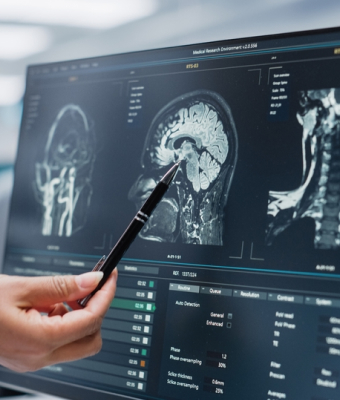Gene therapy is at the leading edge of modern medicine. It is a method in which human DNA is altered to treat the disease. These advanced methodologies can potentially lead to one-time longstanding treatments for infectious and noncommunicable illnesses (e.g., HIV, sickle cell disease) that impact millions of people globally, most of whom dwell in low- and middle-income countries (LMICs). However, the advantages of new healthcare technology, such as gene therapy, are usually limited to high-income countries (HICs).1,2
The notion that new healthcare techniques are inappropriate for LMICs has long been used to keep the rest of the globe from getting the benefits of modern medicine. World health disparity will expand unless there is a coordinated initiative to establish gene therapy capabilities in LMICs.1
Although the gene therapy sector is still in its early stages, initial clinical achievements and significant investment have generated immense momentum. This is a perfect time for LMICs to enter the global market, considering the needs of communities with substantial medical burdens. The following steps must be taken to achieve the worldwide potential of gene therapies.1
Conducting R&D where target ailments are prominent1
Dr. Mutuluza, Executive Director of Uganda’s Joint Clinical Research Centre, stated that gene therapy could cure life-threatening diseases and infections. However, the full impact will only be realized if it is delivered for the benefit of all people rather than igniting further healthcare disparities among and within countries.
Building research and development (R&D) capability in LMICs is a crucial step toward maximizing the global effect of gene therapies. Recent gene therapy research has often neglected LMICs, instead focusing on pre-clinical and clinical trials in HICs.
Gene therapy R&D needs to be performed in areas where target disorders are prevalent to ensure that these treatments are safe and effective for those communities. The World Health Organization’s guidelines, prioritizing safety, efficacy, and ethics, should lead the development of a gene therapy framework. Gene therapy and gene editing procedures are intricate, and it can be challenging for the general public to understand their potential advantages and disadvantages. However, patient and public support are essential for the successful implementation of new technology.
Leverage pandemic infrastructure and policies1
Globally, the current COVID-19 pandemic is hastening the invention, implementation, and adoption of molecular therapies (e.g., mRNA vaccines). Prospectively leveraging molecular therapeutics infrastructure will be crucial in developing, testing, and providing gene therapies in diverse scenarios.
Three essential aspects to consider are as follows:
- Leveraging pandemic-era industrial infrastructure to create gene therapies.
- Extending existing national rules regulating molecular therapy, which emerged promptly during the COVID-19 outbreak, to incorporate gene therapies.
- Educating patients, healthcare providers, and funders about the relevance and significance of gene therapy in alleviating lifelong congenital diseases.
Reduce expenses by localizing production1
Gene therapy is on the path to transforming medical treatment for various illnesses. The objective of gene therapy would be a one-time cure for ailments ranging from genetic hemoglobinopathies (sickle cell disease and thalassemia) to acquired disorders like HIV.
Due to a lack of access to these life-saving treatments and economic constraints, occasionally, there is a mismatch between areas where development and clinical research happen and regions where the illness target is most prevalent.
Moving gene therapy product manufacturing to local regions and “point of care” settings approaches can substantially reduce the price of these goods while improving accessibility.
A multilevel approach to research enhancement1
According to Professor Julie Makani of Tanzania’s Muhimbili University of Health and Allied Sciences, for gene therapy to impact world health, advances in innovation and policy must occur at several stages: personal, organizational, national, continental, and worldwide.
- At a personal level, the critical emphasis objectives are patients and individuals. Using a patient-centered approach ensures that the community is engaged in research and has a voice in acquiring a specific health intervention when it becomes accessible.
- Strategic collaborations accelerate genetic research at the national, continental, and international scales, and it frequently occurs in Centers of Excellence (CoE). Global health and gene therapy research investments must alter at the policy level.
Harmonize regulation across nations1
Gene therapy has earned worldwide attention in recent years, and this prominence is growing with each new clinical success. The field is actively evolving, with revolutionary technology emerging in both the public and commercial sectors. However, because of various technological and policy constraints, access to these life-saving treatments remains limited.
Firstly, scientists must continue discovering cost-effective methods for delivering gene therapies to patients. Furthermore, the unique nature of these individualized therapies makes them challenging to regulate under traditional frameworks, requiring agencies to revise present rules and guidelines. As regulation evolves, it must also coincide with the policies of other nations.
References
- Doxzen K. Gene therapy can make a real impact on global health but we need equitable access, say experts. World economic forum. [Cited: 29 December 2022]. Available from: https://www.weforum.org/agenda/2022/10/experts-gene-therapy-impact-on-global-health
- What is Gene Therapy? U.S. Food and drug administration. [Cited: 29 December 2022]. Available from: https://www.fda.gov/vaccines-blood-biologics/cellular-gene-therapy-products/what-gene-therapy






